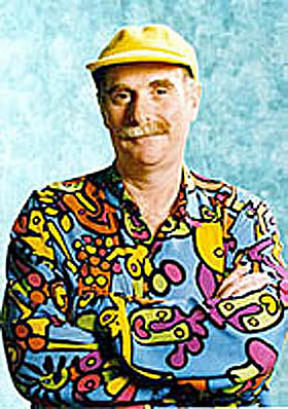The world is going wireless and most Americans are getting connected and mobile. The use of mobile wire-less devices is changing how people interact socially. However, this wave of change has yet to really impact America.
The trend has already had dramatic impacts in Asia and Europe because of the rapid deployment and adoption of wireless communication technology.
The technology of wireless effects how people behave in large groups of interconnected smart mobs using data-driven communications rather than voice.
Internet visionary Howard Rheingold believes it is changing the face of human interaction now and into the future.
Rheingold recently authored a new book on the subject called Smart Mobs: The Next Social Revolution. His research for Smart Mobs took him around the world as well as on the phone to this reporter to answer some questions on his view of our future.
Q: What is your definition of a smart mob?
Rheingold: A smart mob is really about a social practice of a group of people who are enabled by an emerging technology. Were seeing the PC, the Internet and the telephone emerging, and were beginning to see people using mobile communications and the Internet to mobilize and coordinate their collective actions in the real world. Those are smart mobs.
Q: Give us some examples of these collective actions.
Rheingold: I first noticed young people, and then eventually the whole population, in places like Japan and Scandinavia, looking at their telephones rather than listening to them. They were using text messaging where you use your thumb to send a message and it is instantaneously relayed to the screen of the other telephone. Its like instant messaging on your desktop computer except it is on your telephone.
Q: Mobile text messaging is relatively new here in the U.S.
Rheingold: Yes. There are a hundred billion text messages sent monthly worldwide, so it’s big elsewhere.
Q: What are these young people doing?
Rheingold: When I looked into what these teenagers were doing, and this is curious, I was told that the adults were using the term flocking to describe the way teenagers in Asia and in Europe all show up the same place at the same time from eight different directions because theyve coordinated through these messages. Also, over a million Philippine citizens demonstrated peacefully and had, in fact, brought down a corrupt regime – all coordinated by instant messages. I realized that there was a connection here. Smart mobs really grew out of the idea that people were able to coordinate their activities, even if they dont know each other, on the basis of a group of teenagers or a million citizens in ways they werent able to before.
Q: You use the term mobs in your book title, which has a negative connotation. Is part of what your saying that there is both a positive and negative side to this trend?
Rheingold: Yes. This is true of every technology. The printing press enabled the Bible and Mein Kampf to be printed. Telephone certainly is useful to people who dont have social benefits in mind. This is about groups of people being able to amplify their ability to cooperate, to act in the real world. There are some great opportunities as well as pitfalls.
We are already seeing mobs that are not so democratic or nonviolent. The recent Nigerian riots over the World Cup competition saw 200 people die. Many people were summoned to those riots using instant text messaging.
The thing about text messaging as opposed to a phone call is you can send a message to someone and they can instantly forward it to everyone in their telephone and address book. The word can spread much more explosively through a crowd.
We will see unruly mobs as well as democratic demonstrations and criminals and terrorists and totalitarian governments. They will have their ability to cooperate amplified as well.
Q: What is the technology used to facilitate this rapid communication?
Rheingold: Digital bits travel through networks the way packets do on the Internet. With wireless communication technologies, and there are several of those beyond the old cellular we used for voice communication, we’re beginning to see some of these third generation networks emerging in the U.S. You can get an account that gives you high-speed wireless to your PDA or telephone. You can download your e-mail, do instant messaging, and surf the Web.
For example, fishermen in the Arabian Gulf are getting text messages about which port has the best price for their fish today. Were seeing a mixture of mobility, having this in your pocket, and being able to have access not just to people to call, but also to information. Were even seeing people updating their Websites and Web logs mobiley. Were going to start seeing a peer-to-peer journalism emerging.
Q: How do large groups of people obtain this information? Or is it just like a domino effect where one person shares it with three people who share it with three people, etc?
Rheingold: I should emphasize were just seeing the first baby steps. If we remember when the PC first came out in the late 1970s, it was a pretty puny thing. You can hold something in your hand today that is a thousand times more powerful than the first PC and one-fifth the price with a much, much faster connection than the first modems. Were only beginning to see the ways people can connect the way they do on the Internet with people they do not know but with whom they share an interest.
For example, in New York City there is a service called upoc.com. If youre interested in stalking celebrities, there is a Celebrity Watch. When someone spots a celebrity, they said a message to that group and everyone who subscribes to that group could get a text message.
There is also one called NYC Terrorist Alert. When I was there in November 2001, I was walking down the street, my pocket buzzed, I picked up my phone and saw there was a message that an airplane had gone down off of JFK. I was able to change my airline reservations that afternoon to train reservations.
In Brazil, there are 400,000 young people essentially flirting with each other because you can get a service on your telephone that gives you a screen name and a profile and enables you to search for a person with a similar profile in the same area.
Thats another aspect of this – location awareness. Our devices already know where we are. So very quickly, we will be able to go to a new town, say to our telephone or PDA.: I dont know where I am. How do I get to Fifth and Main? We will begin to see people communicating with others who they do not know but are nearby and with whom they share an interest, just as now we can connect with people on the Internet who are not nearby.
Q: In your book, you tell of a scenario about flocking where kids collaborated about train schedules.
Rheingold: That is an example of how people can use wireless communication to cheat the system. In Sweden, the subway fair is on the honor system. You can buy a ticket, but you dont have to run it through any kind of machine to get out. There are random spot checks by transit police who check at certain stations at certain times. So kids in Stockholm send each other text messages saying that the transit police are at a certain stop right now, and people avoid that. Again, theyre collaborating to cheat the system. Its a collective arms race.
When I say collective action, big things happen when people are able to cooperate on a new level.
eBay is a great example of that. It is a market that shouldnt exist because the buyer and seller are thousands of miles apart. Theres a reputation system that makes it work. Part of Smart Mobs talks about how a reputation system might enable us to connect with people we don’t know but might have a common cause.
There is also Napster – 70 million people put their computers together to create this giant jukebox.
There is SETI@home – 2 million people amassed 20 trillion computing operations per second of computing power to search for signals in outer space just by enabling your computer to share the computation with others on a collective basis.
Some people are using those computer cycles to help medical scientists study the immune system – something called folding@home (folding.stanford.edu) that studies protein folding.
So if you imagine that the devices were holding in our hands right now are going to be a thousand times more powerful 10 years from now, you have billions of devices a thousand times more powerful, communicating at very rapid speeds, we will be able to have these super computing collectives, these file-sharing collectives. What will they be able to do that we cant do now? That is the important question about the future.
Howard Rheingold can be reached via his Website at www.rheingold.com or www.smartmobs.com. The full audio interview with Howard Rheingold can be heard Saturday at 11 a.m. on KLAY 1180 AM or anytime at www.webtalkguys.com.
Dana Greenlee is a Web designer and co-host of the WebTalkGuys Radio Show, a Tacoma-based talk show featuring technology news and interviews.







